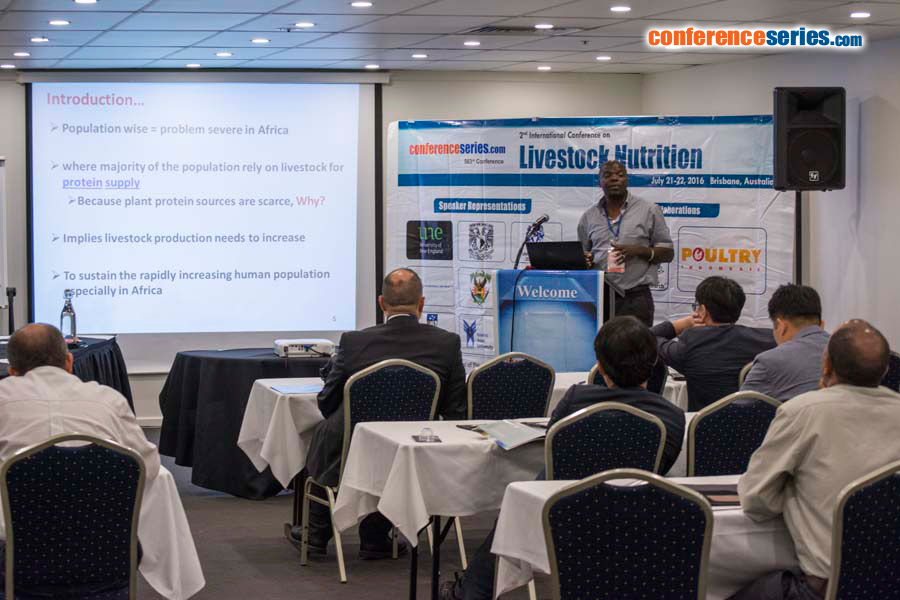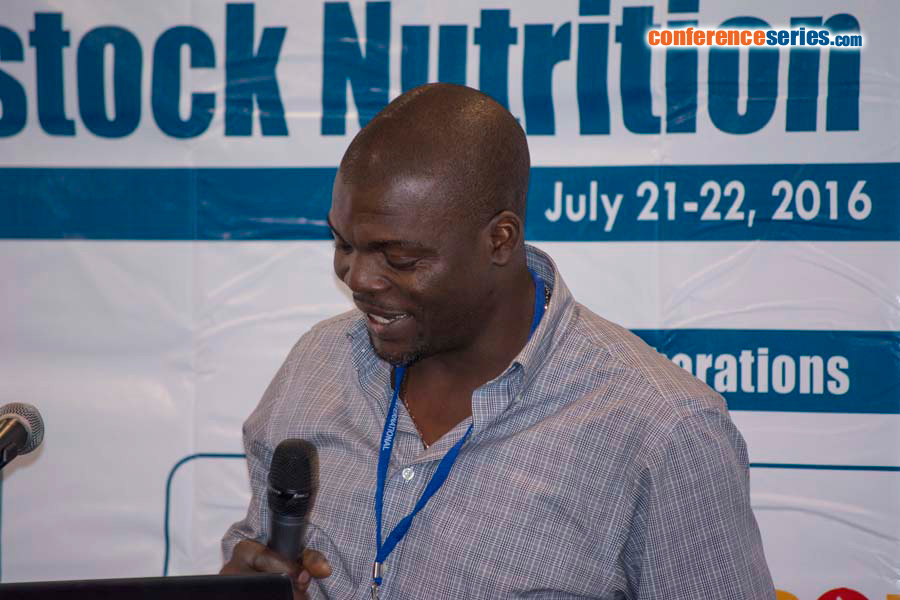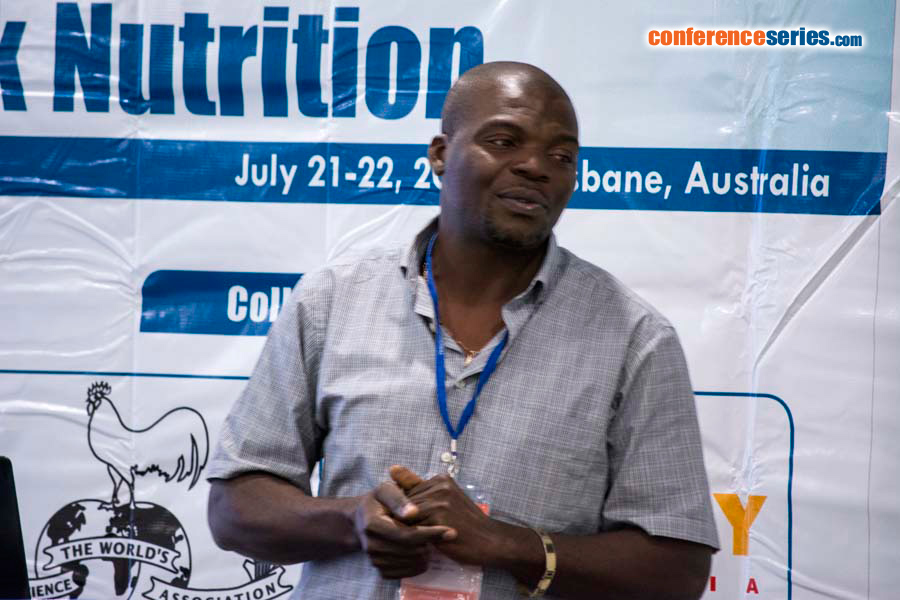
Fon Fabian Nde
University of Zululand, South Africa
Title: The effect of microbial consortia from wild herbivores on goat rumen fibrolytic activity and browse fermentation
Biography
Biography: Fon Fabian Nde
Abstract
Acacia species are often recommended as a protein supplement during the long try season or winter because they are often available and maintain their protein content throughout the year. However, acacia species or browses are often limited by their high tannin concentrations which are also detrimental to fibrolytic microbes hence decrease in digestibility especially in domesticated goats. Therefore this study evaluated the effect of in vitro inocula from wild herbivores (impala, kudu and giraffe) on in vitro fermentation, gas production and cellulases activities of domestic goats. Consortia were created by mixing faecal inoculum from impala, giraffe and kudu with that of goat (N1 (goat + impala, 1:1), N2 (goat + kudu, 1:1), N3 (goat + giraffe+ kudu, 1:1:1) and N4 (goat + giraffe + kudu + impala, 1:1:1:1)). Crude protein enzyme extracts (CPZ) from fresh faecal samples were precipitated by 60% ammonium sulphate and assayed for exocellulase, endocellulase and hemicellulase activities by incubating with crystalline cellulose, carboxymethyl cellulose and xylan at 38℃ with optimum pH of 5.5 to 6.5 for 1, 2, and 48 h, respectively. In vitro degradability was carried out by transferring 33 ml of faecal inoculum into 67 ml salivary buffer containing 1 g of acacia sieberiana and 10% tannin (substrate 6.2% was made up to 10% by adding 100μL containing 3.8 mg tannic acid) before incubating for 72 h at 38℃. Apparent degradability (APD), true degradability (TD), neutral detergent fibre digestibility (NDFdeg), acid detergent fibre digestibility (ADFdeg), cellulose digestibility (CELLdeg), hemicellulose digestibility (HEMdeg) and MY were calculated. Manipulation of goat enzyme activities with enzymes from the wild had a positive (P<0.05) influence on goat fibre degradability. Xylanase and endocellulase activities were highest (P<0.05) in N1 while N4 showed the highest exocellulase activity. Microbial ecosystem N3 had the highest (P<0.05) TD, NDFdeg and ADFdeg while N1 showed the highest degradability for hemicellulose and cellulose. Microbial yield also varied among the microbial ecosystems but was highest for N2, goat and N4. It was concluded that microbial activities from wild herbivores might have introduced new microbes that were able to survive on goat ecosystem and improve its fibrolytic potentialin vitro. These results showed that microbial ecosystem from wild herbivores have a potential to improve browse utilization in domestic goat.
Speaker Presentations
Speaker PDFs
Speaker Interview PDFsClick Here





